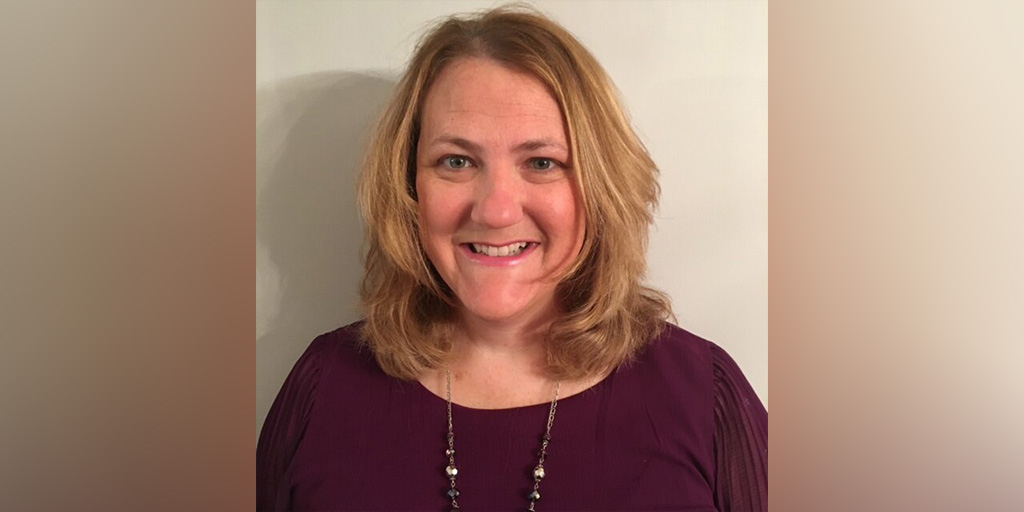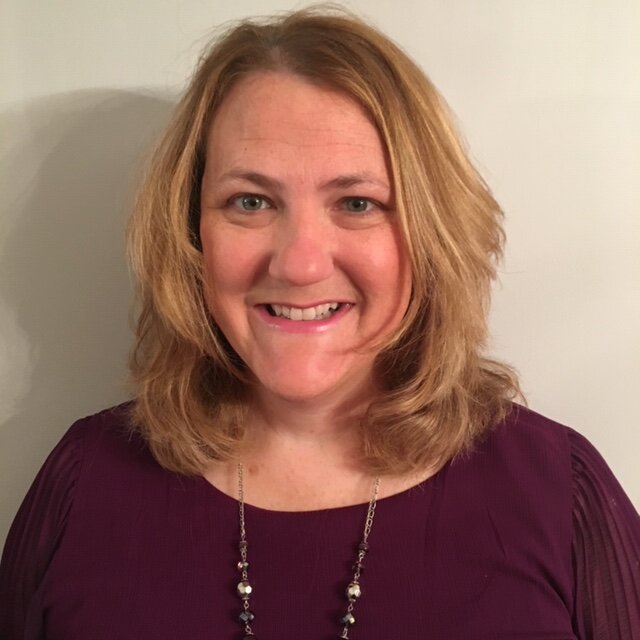
Who’s On Your MDA Care Center Team?: Speech-Language Pathologists
By MDA Staff | Thursday, September 10, 2020
At more than 150 MDA Care Centers nationwide, kids and adults living with neuromuscular disease (NMD) have access to multidisciplinary care teams made up of different specialists who can coordinate in one place on an appointment day to optimize a complete care plan. Included on these teams are allied health professionals and social workers who can support individual treatment and planning aspects of daily life with an NMD. In this multi-part blog series, Who’s On Your MDA Care Center Team?, we sit down with some of the allied health professionals working with Care Center teams to find out more about their roles, when patients should loop them into care plans, and what advice they have for those adjusting to life with NMD.
Angela Strauch Lane is a speech-language pathologist and director of assistive technology for Unified Community Connections in Maryland. In 2001, she developed Unified’s Assistive Technology Center, which provides assistive technology and augmentative and alternative communication (AAC) services for adults and children with disabilities. Angela is an affiliate faculty member in the Speech-Language Pathology Department at Loyola University Maryland and a member of the Johns Hopkins ALS Clinic team.

As a speech-language pathologist (SLP), what do you do? What is your role in the MDA Care Center multidisciplinary team?
SLPs are trained in a variety of areas, including speech skills, language skills, eating and swallowing, neurogenic communication disorders, fluency disorders, augmentative and alternative communication (AAC), and voice disorders. I specialize in AAC devices, aka speech-generating devices, which are computer-based devices that can speak for individuals who have lost the ability to speak or who present with speech that is difficult to understand. AAC devices can be accessed via a body part, headtracking, eye gaze, and other methods, and the systems can be picture-based, word-based, or letter-based. They can be as simple as a few pictures on a page (for example, by pressing a picture of a TV, the device would say “I want to watch TV”), or as complicated as a keyboard that a person can use to type out full messages. The neat thing about the more complex AAC devices is that they also offer access to computer features, such as email, social media, and internet browsing. They really provide individuals who cannot speak a bridge to connect with others.
As part of the MDA Care Center multidisciplinary team, my role is to provide assessments and training for AAC devices.
What are some of the issues you see affecting individuals with whom you work? Are there differences between kids and adults?
One of the biggest issues I see in kids and adults is a lack of support for AAC device use and ultimate abandonment. If family, caregivers, and support staff are not properly trained on the AAC system, then they may not ensure that the device is charged each night or available to an individual each day. It is imperative that family and caregivers encourage use of the communication system and help individuals become more confident and proficient in the system’s use. In our clinic, we stress the importance of training and daily use of the AAC device and provide follow-up services as necessary.
When should patients involve an SLP in their treatment plan? What questions should they ask, and how can they help best inform you of what they need?
As soon as a patient has concern about speech (slurring; decreased intelligibility; low muscle tone in the lips, tongue, and cheeks; and decreased coordination), they should reach out to an SLP. SLPs will often start by treating the areas of need, working on improving strength, mobility, and intelligibility. Oral motor therapy (OMT) works to improve jaw, lip, and tongue function by increasing strength. If the SLP determines that natural speech skills cannot be improved (as is often the case with progressive disorders), then a recommendation may be made for an AAC device. The SLP may complete the assessment themself or refer to someone such as myself who specializes in AAC.
Patients should have an open dialogue with the SLP. They should ask the SLP if speech-language treatment would be beneficial or if alternate methods of communication should be considered.
How can SLPs help patients thrive?
SLPs are involved in so many areas — improving fluency, modifying diets to reduce the risk of aspiration and choking, and improving overall communication skills. For individuals who cannot successfully communicate, daily life can be frustrating and isolating. By evaluating a patient and making an appropriate recommendation for an AAC device, I can help to provide them with a means for asking questions or for help, participating in social exchanges, transferring information, and responding. AAC gives them access to the world outside of their four walls, and I think that is so important in achieving independence, productivity, and quality of life.
One day, my phone rang, and when I answered it I heard the synthesized voice of a communication device saying, “This is Mary. I am calling you from my communication device. I just wanted to say ‘happy holidays.’ That was a phone call I will never forget because Mary was able to independently reach out to me and participate in a very-much-appreciated social exchange. That is thriving!
What kind of follow-up or long-term SLP assistance should individuals plan for?
I encourage individuals to meet with me early on after their diagnosis when they are noticing changes in their speech. I find that most patients appreciate learning about AAC devices and the various access methods available. Before using an AAC system, patients might use a voice amplifier that increases the volume of speech and decreases the physical effort needed to speak, or they may utilize voice-to-text programs if they have reduced motor skills, or they may use some simple picture-based apps. I think it gives individuals peace of mind to know there are ways for them to communicate even if they lose their speech and motor skills. We invite them to come back and meet with us again as communication and motor skills change.
What advice do you have for individuals living with neuromuscular disease?
My advice is to definitely seek out services from an SLP if you have any concerns about speech, language, voice, or eating/swallowing skills. Even if the time isn’t right for therapy, we can offer you some compensatory strategies or information about alternative modalities of communication. I also recommend that if it is time for an AAC device, make sure you work with an SLP who can demonstrate a variety of systems to you make sure you are obtaining the most appropriate one. Insurance typically funds an AAC device (partially or fully) every five years, so you need to be sure the recommended device can change as your communication needs evolve. And most of all, know that SLPs are here for you! We are happy to provide evidence-based, innovative, and hopefully exciting services to help you be a better communicator.
Disclaimer: No content on this site should ever be used as a substitute for direct medical advice from your doctor or other qualified clinician.




